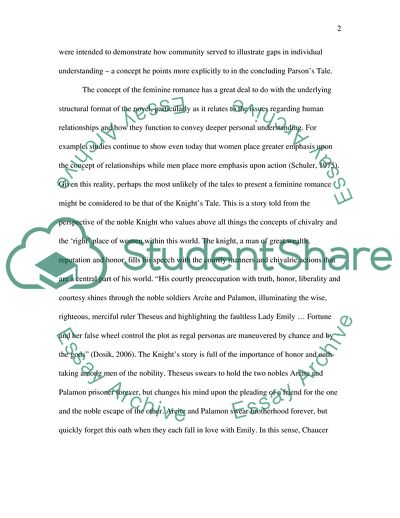Chaucers Feminine Romances Essay Example | Topics and Well Written Essays - 1500 words - 1. https://studentshare.org/literature/1746997-full-critical-analysis-of-at-least-one-major-tale-and-teller-in-context-of-existing-whole-work-in-canterbury-tales
Chaucers Feminine Romances Essay Example | Topics and Well Written Essays - 1500 Words - 1. https://studentshare.org/literature/1746997-full-critical-analysis-of-at-least-one-major-tale-and-teller-in-context-of-existing-whole-work-in-canterbury-tales.


